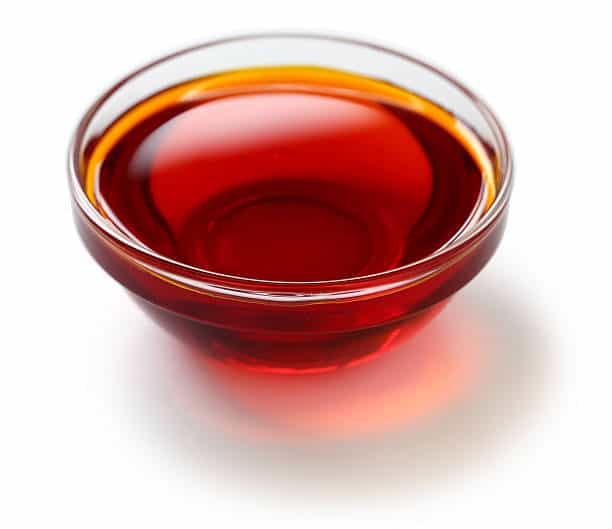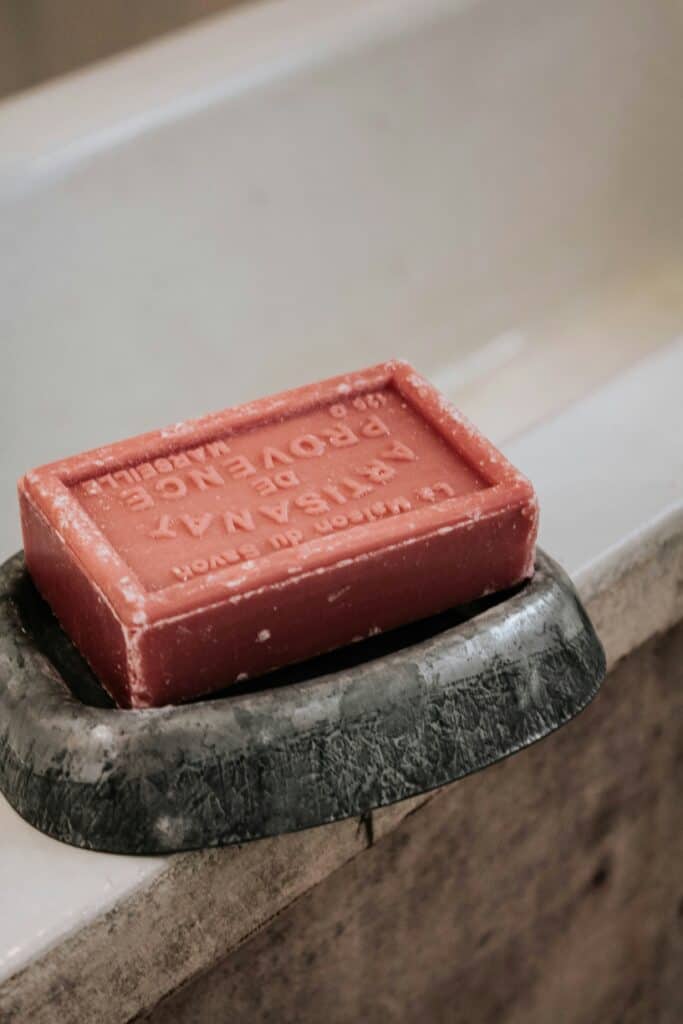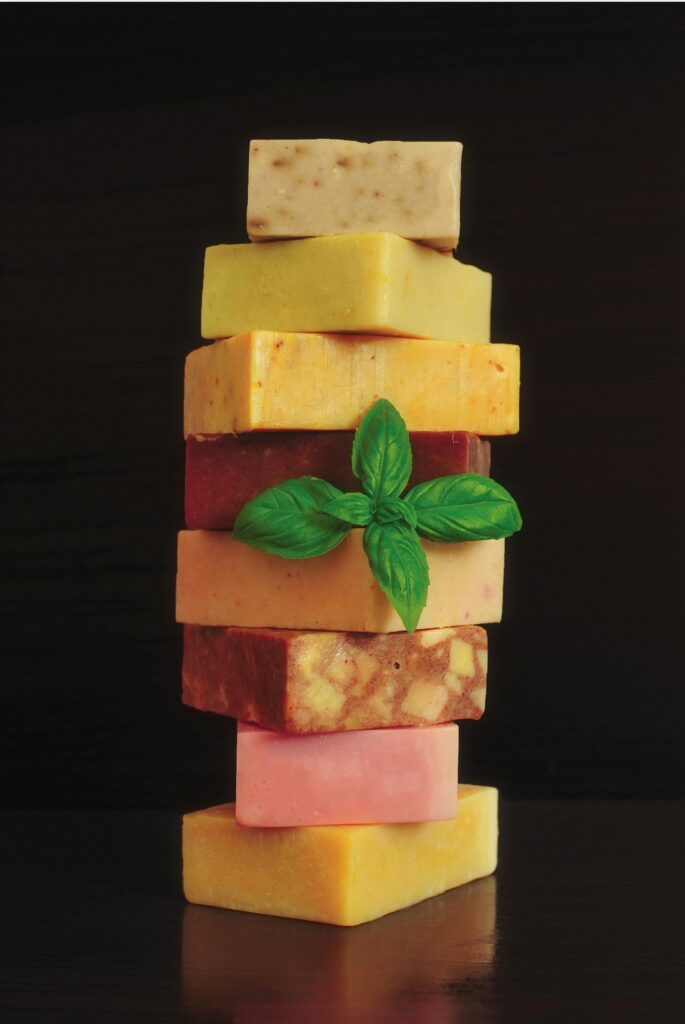Red Palm Oil Soap: Benefits & Recipes 2025
Are you tired of using harsh chemical-laden skincare products that leave your skin feeling dry and dull? Look no further than red palm oil soap, a natural and nourishing solution for all your skincare needs.
Hydrate, Cleanse, and Anti-Age with Red Palm Oil Soap
Red palm oil soap is packed with nutrients and antioxidants that provide a trifecta of benefits for your skin:
- Hydration: Red palm oil soap helps to lock in moisture, leaving your skin feeling soft, supple, and hydrated.
- Cleansing: Gentle yet effective, it cleanses your skin without stripping it of its natural oils.
- Anti-Aging: Rich in antioxidants, it helps to combat fine lines, wrinkles, and age spots, leaving your skin looking radiant and youthful.

What to Expect from This Article
In this article, we’ll dive deeper into the benefits and uses of red palm oil soap, including:
- The science behind its nourishing properties
- How to use red palm oil soap for optimal skincare
- DIY recipes to enhance its benefits
- Tips for incorporating red palm oil soap into your daily skincare routine
Get ready to discover the natural skincare solution that will transform your skin from the inside out.
What Is Red Palm Oil Soap?
Definition and Origins
Red palm oil soap is a type of soap that utilizes red palm oil as its primary ingredient. Red palm oil is derived from the fruit of the oil palm tree (Elaeis guineensis), which is native to West Africa. For centuries, red palm oil has been used in traditional skincare and soap-making due to its remarkable moisturizing and nourishing properties.
Key Ingredient: Red Palm Oil
Red palm oil is a rich source of essential fatty acids, vitamins, and antioxidants that make it an ideal ingredient for skincare. It is particularly high in:
- Vitamin E (tocotrienols and tocopherols), which protects the skin from damage and promotes collagen production.
- Beta-carotene, a precursor to vitamin A that supports skin health and reduces the appearance of fine lines and wrinkles.
- Fatty acids, such as oleic and palmitic acid, which moisturize and nourish the skin.
Traditional Use in Skincare and Soap-Making
Red palm oil has been used for generations in traditional skincare and soap-making due to its remarkable ability to moisturize and nourish the skin. It is often used in combination with other natural ingredients to create a soap that is gentle, effective, and sustainable.

Why Use Red Palm Oil in Soap?
Red palm oil is an ideal ingredient for soap-making due to its unique properties and eco-friendly aspects. Here are just a few reasons why:
- High in antioxidants: Red palm oil is rich in antioxidants that help protect the skin from damage and promote collagen production.
- Moisturizing and nourishing: Red palm oil is rich in fatty acids that moisturize and nourish the skin, leaving it feeling soft and supple.
- Eco-friendly and sustainable: Red palm oil is a sustainable and eco-friendly ingredient that is sourced from certified sustainable sources.
By using red palm oil in soap, you can create a natural and nourishing skincare product that is gentle, effective, and sustainable.
It also can have great benefits for your hair.
Benefits of Red Palm Oil Soap
Key Benefits of Red Palm Oil Soap
Red palm oil soap is a natural and nourishing solution for a range of skin types and concerns. Here are just a few of the key benefits of using red palm oil soap:
- Moisturizing: Red palm oil soap provides deep hydration for dry skin, leaving it feeling soft, supple, and nourished. The high levels of fatty acids in red palm oil help to lock in moisture, reducing the appearance of fine lines and wrinkles.
- Anti-aging: Red palm oil soap is rich in powerful antioxidants, including vitamin E and beta-carotene, which help to fight free radicals and reduce the signs of aging. This can help to improve skin elasticity, reduce the appearance of fine lines and wrinkles, and leave skin looking more radiant and youthful.
- Brightening: The beta-carotene in red palm oil soap helps to enhance skin tone, reducing the appearance of hyperpigmentation and leaving skin looking brighter and more even.
- Healing: Red palm oil soap is ideal for soothing sensitive or irritated skin conditions like eczema. The anti-inflammatory properties of red palm oil help to reduce redness and irritation, while the moisturizing properties help to lock in hydration and promote healing.
Is Red Palm Oil Soap Good for All Skin Types?
Red palm oil soap is ideal for dry, sensitive, and mature skin. The moisturizing and nourishing properties of red palm oil help to hydrate and protect the skin, reducing the appearance of fine lines and wrinkles and leaving skin feeling soft and supple.
However, red palm oil soap can also benefit oily or acne-prone skin. The balancing properties of red palm oil help to regulate oil production, reducing the appearance of pores and leaving skin looking clearer and more radiant.
If you have a palm oil allergy, it’s essential to take precautions before using red palm oil soap. Always do a patch test before using a new skincare product, and consult with a healthcare professional if you have any concerns.
While topical creams and serums can provide temporary relief for skin issues, true skin health begins from within. By cleansing the body of toxins, we can allow the body to naturally regulate its own processes, leading to a more balanced and healthy skin tone. This holistic approach to skin health can lead to a more sustainable and long-lasting glow
How to Make Red Palm Oil Soap
Ingredients for DIY Red Palm Oil Soap
Making soap at home is a fun and rewarding DIY project. Here are the ingredients you’ll need to get started:
- Red palm oil (organic and sustainably sourced): This is the star of the show, providing moisturizing and nourishing properties to your soap.
- Base oils: You’ll need a combination of base oils to create a balanced soap recipe. Choose from coconut oil, olive oil, or shea butter.
- Lye (sodium hydroxide): This is a necessary ingredient for soap-making, but be sure to handle it safely and with caution.
- Essential oils for fragrance: Add a few drops of your favorite essential oil for a pleasant scent. Lavender and tea tree oil are popular choices.
- Optional additives: Consider adding oatmeal, turmeric, or activated charcoal for extra skin benefits.

Step-by-Step Recipe for Red Palm Oil Soap
Here’s a basic recipe to get you started:
Step 1: Gather and measure all ingredients
Make sure you have all the ingredients ready and measured accurately.
Step 2: Prepare lye solution safely
Wear gloves and goggles, and mix the lye with distilled water in a well-ventilated area.
Step 3: Melt red palm oil and other oils
Combine the red palm oil with your chosen base oils and heat until melted.
Step 4: Combine lye solution with oils and mix until trace
Slowly add the lye solution to the oil mixture, blending until you reach a thick, custard-like consistency.
Step 5: Add optional additives and pour into molds
Add any optional additives, then pour the mixture into soap molds.
Step 6: Cure soap for 4–6 weeks before use
Let the soap cure for several weeks to allow it to harden and mature.
Tips for Soap-Making Success
Remember to:
- Always wear gloves and goggles when handling lye.
- Use a thermometer for accurate temperature control.
- Test for pH balance before using cured soap.
By following these steps and tips, you’ll be well on your way to creating your own nourishing red palm oil soap at home. Happy soap-making!
How to Use and Store Red Palm Oil Soap
Best Ways to Use Red Palm Oil Soap
Red palm oil soap is a versatile and nourishing soap that can be used in a variety of ways. Here are some of the best ways to use it:
- Face cleanser: Use it as a gentle and moisturizing face cleanser, ideal for dry or sensitive skin.
- Body soap: Use it as a body soap to moisturize and brighten your skin, leaving it feeling soft and supple.
- Shaving soap: Red palm oil soap makes a great shaving soap, providing a smooth and nourished shave.

How to Store Red Palm Oil Soap
To keep your red palm oil soap fresh and effective, follow these storage tips:
- Store in a cool, dry place: Avoid storing your soap in a humid or hot environment, as this can cause it to degrade or become soggy.
- Use a soap dish with drainage: Place your soap on a soap dish with drainage holes to prevent water from accumulating and causing the soap to become soggy.
Potential Side Effects and Precautions
While red palm oil soap is generally safe to use, there are some potential side effects and precautions to be aware of:
- Rare cases of skin irritation or allergic reactions: If you experience any skin irritation or allergic reactions, discontinue use and consult with a healthcare professional.
- Importance of patch-testing: Always patch-test a new soap on a small area of skin before using it on your face or body.
- Eco-conscious tips: Ensure that your red palm oil is sustainably sourced to avoid contributing to deforestation and environmental degradation.
By following these tips and precautions, you can enjoy the many benefits of red palm oil soap while minimizing the risk of any potential side effects.
FAQs About Red Palm Oil Soap
Is Red Palm Oil Soap Good for Acne?
Yes, it can help balance oil production and soothe inflammation.
Can Red Palm Oil Stain Clothes or Skin?
The natural orange-red color may stain light fabrics if not rinsed properly, but it won’t stain skin permanently.
How Long Does Red Palm Oil Soap Last?
Properly stored, it can last up to a year.
What Is the Difference Between Red Palm Oil and Regular Palm Oil?
Red palm oil is less processed and retains its nutrients and color, while regular palm oil is refined and lacks key vitamins like beta-carotene.
Can you eat red palm oil?
Yes, red palm oil is edible and can be consumed as a food oil. In fact, it has been a staple ingredient in many traditional cuisines, particularly in West Africa and Southeast Asia.
Conclusion
Making red palm oil soap can be a rewarding and creative experience. With its numerous benefits for the skin, including balancing oil production and soothing inflammation, it’s no wonder why red palm oil soap is becoming increasingly popular. By understanding the basics of soap making and the unique characteristics of red palm oil, you can create a high-quality and nourishing soap that will leave your skin feeling soft, smooth, and healthy. Remember to properly store your soap to ensure it lasts up to a year, and be mindful of its potential to stain light fabrics. With practice and patience, you can master the art of making red palm oil soap and enjoy its many benefits for years to come.
Discover more from Maxwell Person
Subscribe to get the latest posts sent to your email.